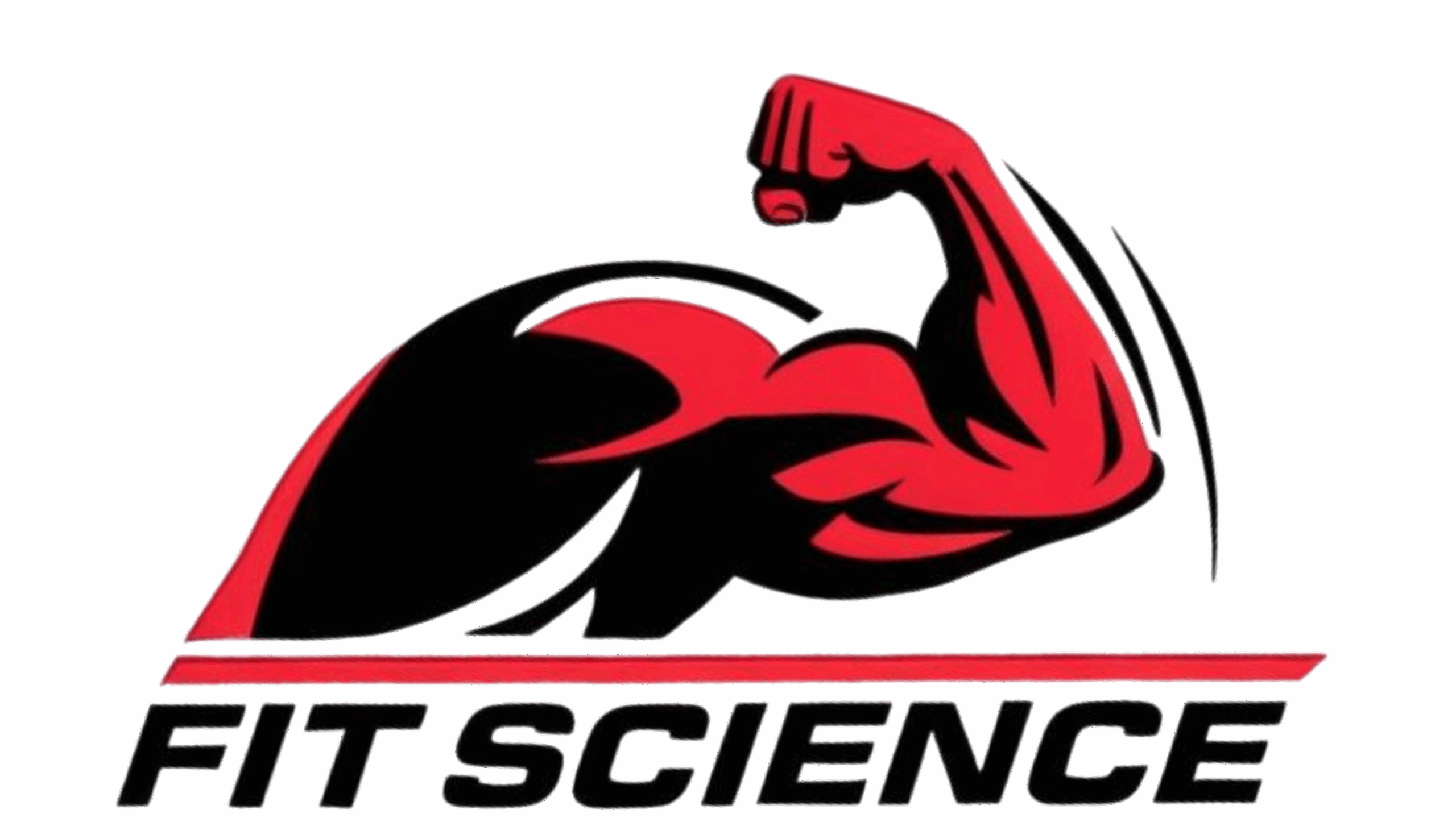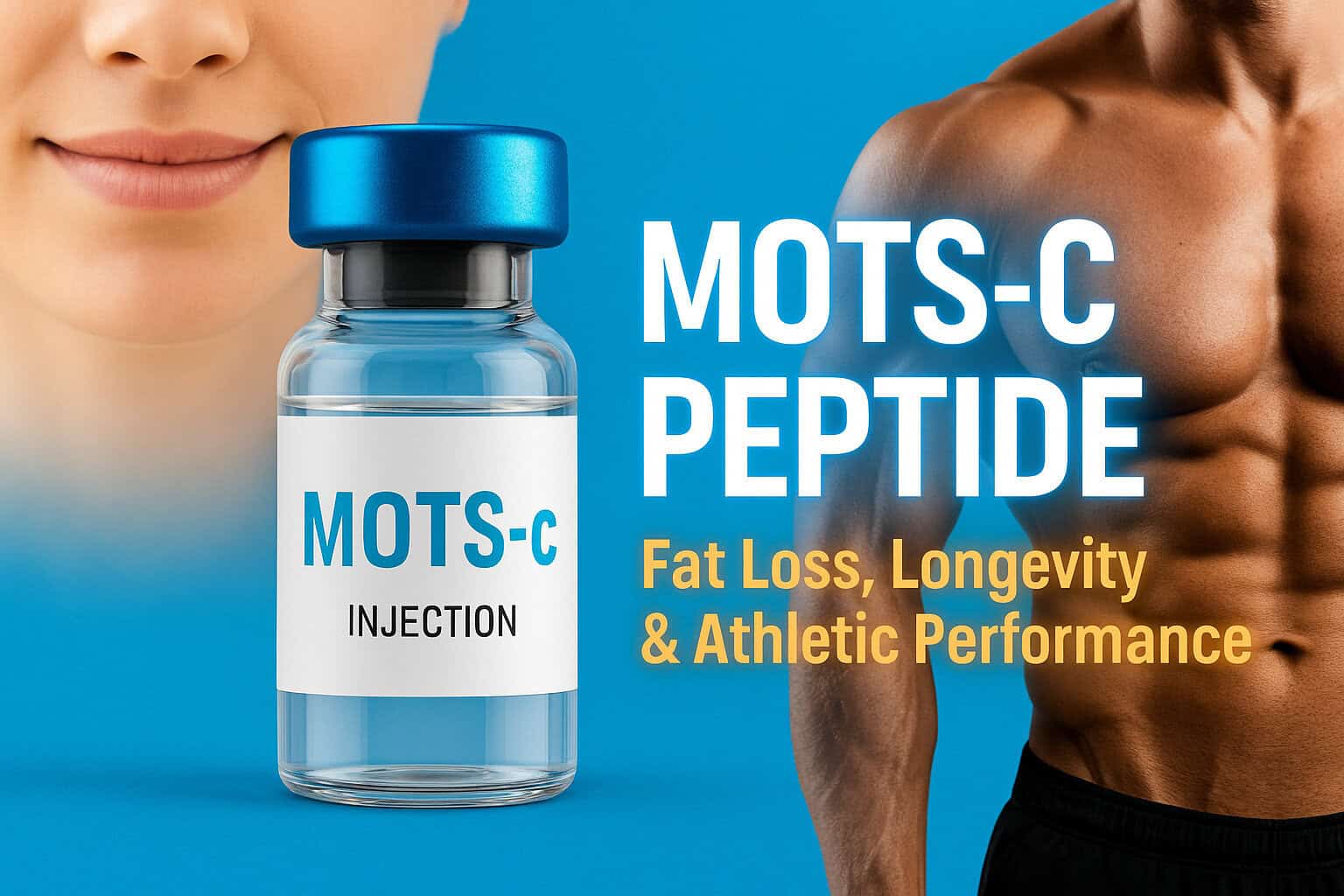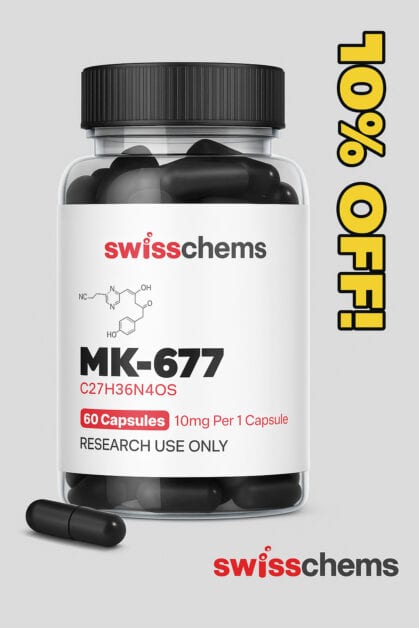What Is MOTS-c?
MOTS-c (Mitochondrial Open Reading Frame of the 12S rRNA Type-c) is a 16-amino-acid peptide encoded by mitochondrial DNA—not nuclear DNA like most peptides. That’s a game-changer.
Discovered in 2015, MOTS-c is part of a new class of compounds called mitochondrial-derived peptides (MDPs), and it’s quickly becoming one of the most exciting peptides in both the anti-aging and performance enhancement communities.
This peptide acts as a master regulator of cellular metabolism, primarily through activation of AMPK (a key cellular energy sensor), improvement in insulin sensitivity, and increased fat oxidation.
Unlike growth hormone peptides or androgenic agents, MOTS-c works by enhancing energy efficiency at the cellular level—making it incredibly useful for bodybuilders, endurance athletes, and anyone trying to lose fat while maintaining muscle.
How MOTS-c Works
MOTS-c’s power lies in its effect on the mitochondria—the energy factories of your cells.
Here’s how it works:
-
Activates AMPK: Encourages fat burning and glucose uptake
-
Increases mitochondrial biogenesis: More mitochondria = more energy
-
Enhances insulin sensitivity: Better glucose partitioning to muscle vs fat
-
Protects against oxidative stress: Anti-inflammatory, DNA-protective properties
-
Improves exercise capacity: Delays fatigue by improving energy substrate use
In simple terms, MOTS-c helps your body use energy more efficiently, especially under metabolic stress like intense training, calorie deficits, or aging.
Human and Animal Trials: What the Research Says
1. Improved Endurance in Mice
In the original 2015 landmark study, mice injected with MOTS-c saw two-fold improvements in running time on a treadmill, despite being untrained. Even more impressively, they showed enhanced glucose metabolism and fat burning.
2. Insulin Sensitivity & Weight Loss
In another trial, MOTS-c-treated mice on a high-fat diet gained 50% less fat than controls, without a change in food intake. Glucose tolerance also improved significantly.
3. Human Trials (2020–2024)
Recent human trials show that MOTS-c levels decline with age and metabolic dysfunction. Supplementation in middle-aged and elderly men led to:
-
Increased resting energy expenditure
-
Improved skeletal muscle insulin signaling
-
Reduced fasting glucose and inflammation markers
-
Greater fat loss over 12 weeks when combined with exercise
MOTS-c has also been tested in clinical settings for type 2 diabetes, frailty, and mitochondrial diseases—with promising results in each.
Reddit Reviews and Real-World User Feedback
MOTS-c has been quietly gaining traction in biohacking and enhanced lifting circles, especially on platforms like Reddit and private Discords.
Here’s a snapshot of actual user-reported benefits:
✅ Endurance Boost
“I could go harder and longer during my sessions, especially during high-rep squats and fasted cardio. Felt like I was more ‘efficient’ overall.” – u/micropinman
✅ Recomposition Effects
“Dropped 5lbs in 3 weeks with no diet change. Looked leaner but didn’t feel depleted. Didn’t touch my lifts either.” – u/FitOver40
✅ Improved Insulin Sensitivity
“I’ve been tracking glucose with a CGM. My numbers flattened after 2 weeks on MOTS-c. Post-meal spikes were 15-20% lower.” – u/datafreak12
❌ Limited Mass Gain
“Don’t expect size. It’s not like IGF-1 or MK-677. But it makes your body work smarter. Great during cuts.” – u/darkcardio
Overall, the consensus is that MOTS-c won’t bulk you up, but it’s fantastic for energy, recomposition, and fat loss without fatigue.
How to Use MOTS-c: Dosing & Cycling Protocol
✅ Standard Fat Loss & Endurance Protocol
-
Dose: 10mg daily
-
Route: Subcutaneous (belly fat area)
-
Timing: AM on an empty stomach, or 30–60 minutes before fasted cardio
-
Cycle: 4–6 weeks on, 4 weeks off
✅ Recomposition & Anti-Aging Protocol
-
Dose: 5mg, 3–5x per week
-
Route: SC in the morning
-
Cycle: 6–8 weeks, repeat quarterly
✅ Performance Stack Add-On
For athletes or enhanced users, stack MOTS-c with:
-
Tesofensine (for appetite suppression + neuroenergy)
-
CJC-1295 / Ipamorelin (to maintain lean mass during caloric deficit)
-
AOD-9604 (for localized fat burning)
-
GHK-Cu (for skin and recovery support)
Half-Life and Pharmacokinetics
-
Half-Life: ~3 hours
-
Peak Plasma Time: 30–60 minutes post-injection
-
Duration of Action: 6–8 hours of elevated AMPK and mitochondrial activation
Due to its relatively short half-life, timing matters. For fat loss and endurance, pre-workout or fasted AM doses seem ideal.
Who Should Use MOTS-c?
Ideal Candidates:
-
✅ Athletes in a cut phase
-
✅ Bodybuilders in contest prep
-
✅ Over-35 lifters seeking better energy partitioning
-
✅ Enhanced users looking for a safer mitochondrial optimizer
-
✅ Anyone hitting a fat loss plateau without sacrificing lean mass
Who Should Avoid:
-
❌ Bulking-phase users expecting direct anabolic effects
-
❌ Anyone looking for “overnight” results
-
❌ Those not ready to combine with training and diet (MOTS-c works best when paired with effort)
Advantages Over Other Peptides
| Peptide | Primary Benefit | Pros | Cons |
|---|---|---|---|
| MOTS-c | Mitochondrial efficiency | Great for fat loss, energy, longevity | Not anabolic |
| AOD-9604 | Lipolysis | Good for localized fat | Minimal muscle impact |
| CJC-1295 | GH stimulation | Builds lean mass | Slower to affect fat loss |
| Tesofensine | Appetite suppressant | Neuroboosting | Can affect mood in some |
| IGF-1 LR3 | Muscle building | Very anabolic | Risk of IGF desensitization |
MOTS-c is best viewed as a fat-burning and performance enhancer, not a growth peptide. It’s in a class of its own.
Observed Results After 4–6 Weeks
| Metric | Typical Change |
|---|---|
| Fat mass | ↓ 3–6 lbs (with diet and cardio) |
| Endurance capacity | ↑ 10–30% |
| Recovery time | ↓ noticeable |
| Insulin sensitivity | ↑ (measurable with CGM or labs) |
| Appetite | ↔ (not suppressed, unlike semaglutide) |
| Muscle mass | ↔ Maintained |
| Cognitive clarity | ↑ Mild boost reported |
Note: These are anecdotal reports and user averages. Not every individual responds the same.
Safety, Side Effects, and Legality
MOTS-c has shown very minimal side effects in clinical trials. Most common:
-
Mild flushing or warmth at injection site
-
Slight fatigue during the first 2 days (as AMPK adjusts)
-
No changes in liver enzymes or organ biomarkers
As of 2025, MOTS-c is legal for research use only in most countries. It is not FDA-approved, so users source it from research chemical suppliers. Always ensure sterility and third-party testing.
Final Verdict: Is MOTS-c Worth It for Bodybuilders?
If you’re expecting IGF-1-style muscle growth, you’ll be disappointed. But if you want to:
-
Burn fat efficiently
-
Train harder with more energy
-
Recover without overtaxing your system
-
Improve metabolic flexibility
Then MOTS-c is one of the smartest, safest additions you can make to your stack.
In an era dominated by GLP-1s, growth hormone analogs, and bulk-focused compounds, MOTS-c is the lifter’s biohacking tool for longevity and performance.
📚 References
-
Lee C, Zeng J, Drew BG, et al. “The Mitochondrial-Derived Peptide MOTS-c Promotes Metabolic Homeostasis and Reduces Obesity and Insulin Resistance.” Cell Metabolism.
-
Reynolds JC et al. “MOTS-c is an Exercise-Induced Mitochondrial-Encoded Regulator of Age-Dependent Physical Decline and Muscle Homeostasis.” Nature Communications.
-
Reddit r/Biohackers, r/SARMs, r/PeptidesUsers discussion threads, 2023–2025
-
Tezapsidis N, Shapira I. “Clinical Potential of Mitochondrial-Derived Peptides in Obesity, Diabetes, and Aging.” Biogerontology.
-
Jang JY et al. “MOTS-c Enhances Insulin Sensitivity and Fat Metabolism in Older Adults.” Journal of Endocrinology & Aging.











